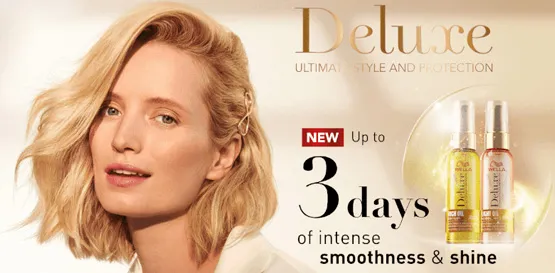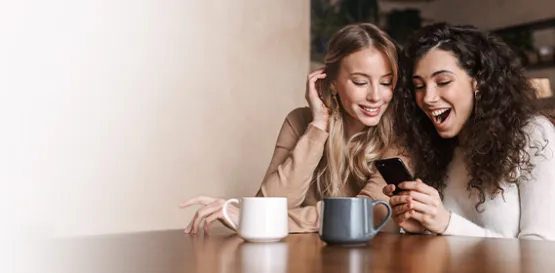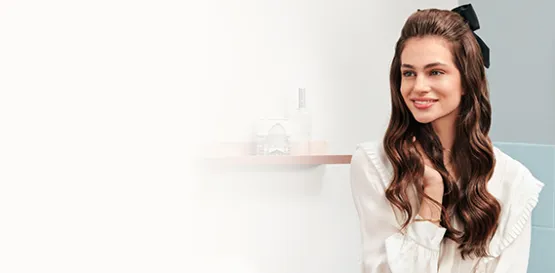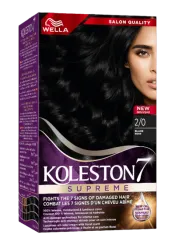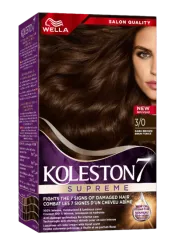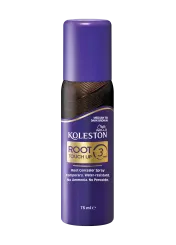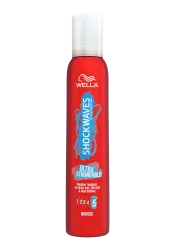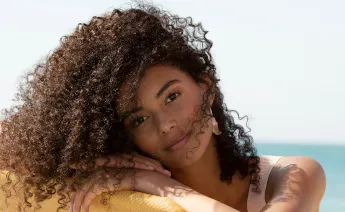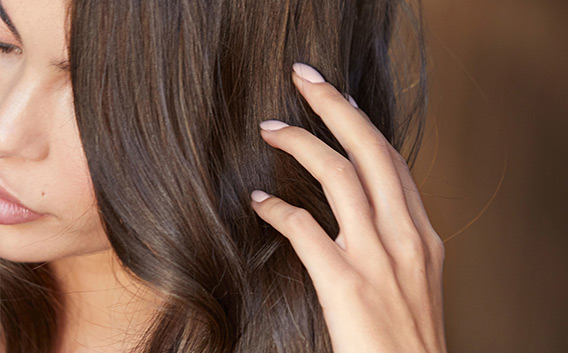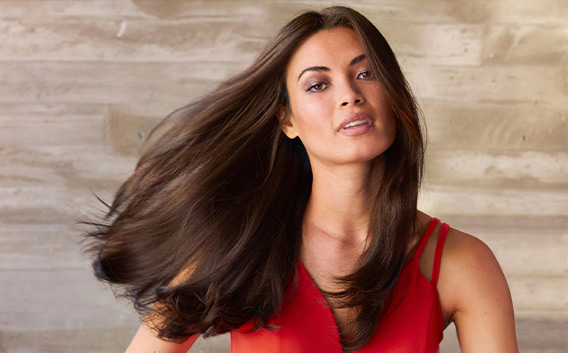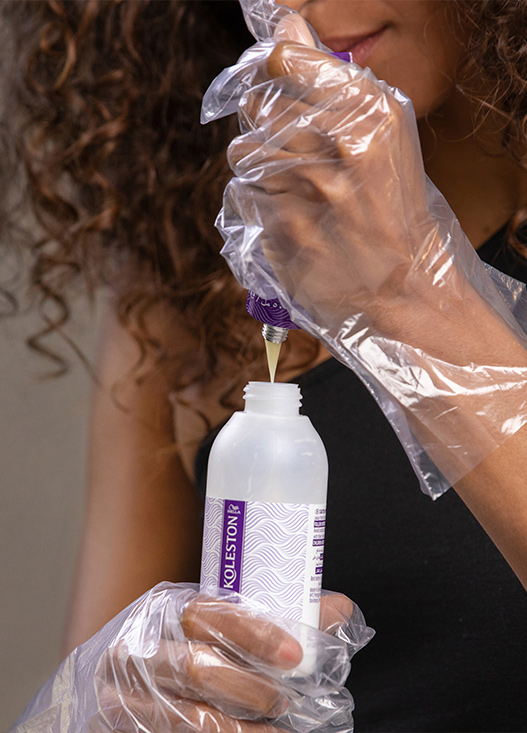
To understand the science of hair color, it is essential to know WHAT we are coloring. Types of hair can be drastically different – from curly to straight, thin to thick and blonde to black – almost no two hair strands are alike. How to adjust coloring to your hair type?
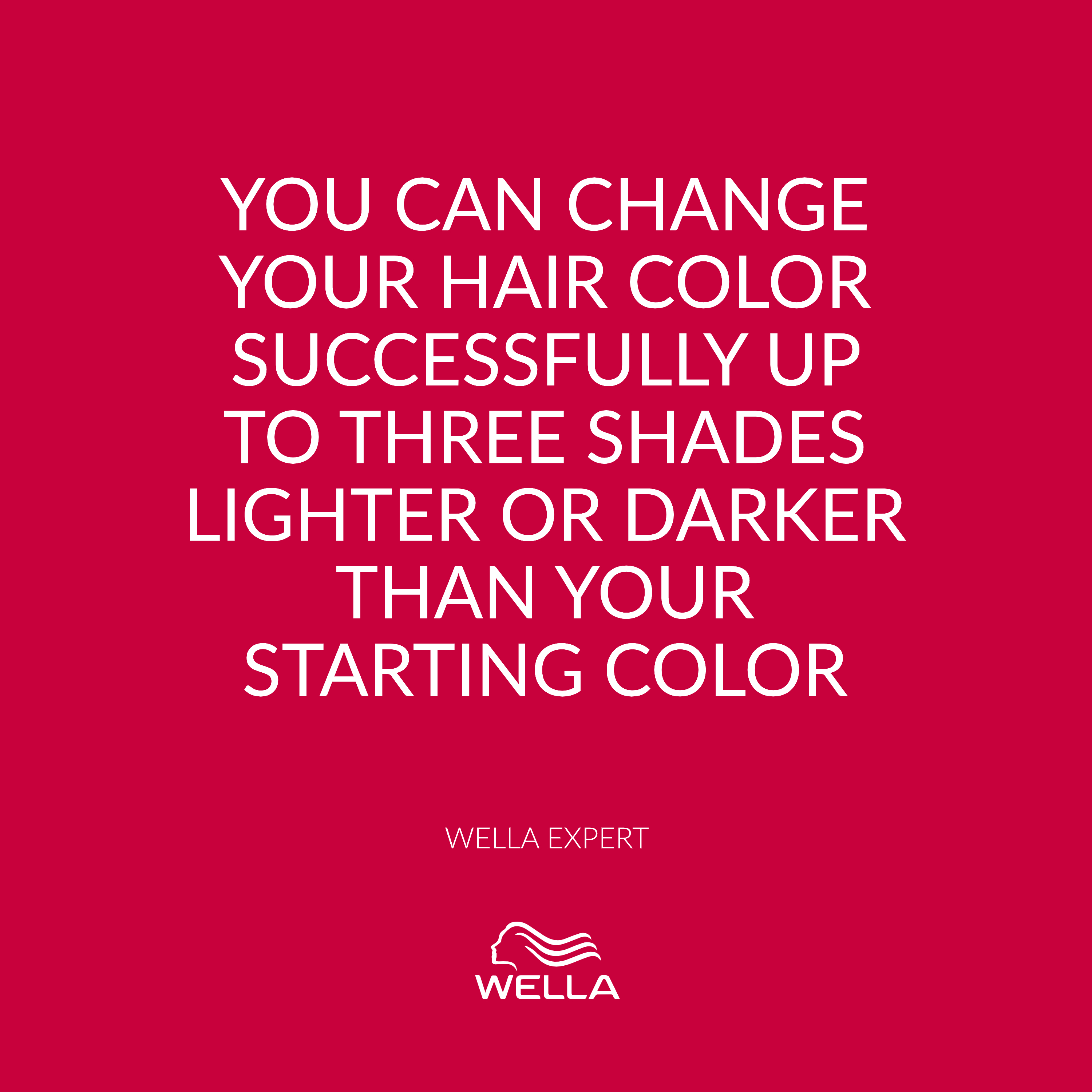
When coloring, knowing your hair type is critical. For a basic overview of your hair’s makeup, take a look at our Hair Science article. Once you know a bit about the makeup of your hair, it’s crucial to understand how it affects your hair. Your natural hair pigment, called melanin, is housed in the cortex of your hair – which are the cells aligned along with the hair fiber. This is why hair coloring also occurs in the cortex since it affects the natural pigment of your hair.
What are the factors that affect how hair color works?
Your current hair color (natural or previously colored) makes a difference in how non-permanent or permanent hair color turns out. If you’re not sure what shade to choose, go with this longstanding hair color rule – you can change your hair color successfully up to three shades lighter or darker than your starting color. If you currently have medium brown hair, for example, you could lighten it to a light brown or a dark blonde or go darker to dark brown.
Hair type also makes a difference. Coarse hairs, which are large in diameter, generally take more time to absorb color, while fine hair, which is small in diameter, takes less time to absorb color. Dry or permed hair may absorb color more quickly. Since several factors affect timing, it’s essential to use a strand test to estimate coloring time.
How coloring works?
Hair coloring works by coating each strand with color (non-permanent color) or by penetrating each hair cuticle, entering the hair cortex, and bonding with the hair (permanent color). While non-permanent hair color can be shampooed out eventually, permanent color, as the name suggests, permanently colors the hair. However, since hair constantly grows, the color will ultimately grow out. Just as there are different types of hair, there are different types of hair color, as identified in this chart.
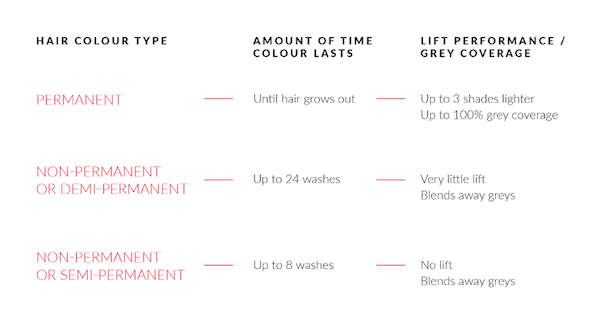
How permanent hair color works?
As the name suggests, this type of hair color permanently colors your hair. It works from the outside in – the process involves removing your natural color and adding your desired color with the product. While the coloring remains on your hair, your uncolored hair will show through as your hair grows.
Here are facts about permanent hair color:
Offers 100% grey coverage, even on resistant greys
Can lighten hair by 1-3 shades
Can also be used for subtle color changes
Lasts longer than direct dye products
Root application is recommended every 4-6 weeks to avoid noticeable roots re-growth
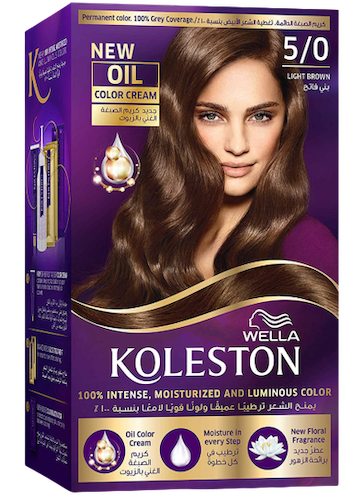
How non-permanent (up to 24 shampoos) hair color works?
This type works by coating each hair strand with color – it is also known as demi-permanent hair color. If you are coloring your hair for the first time or only want to enhance your natural color, try a non-permanent product that lasts up to 24 shampoos with no long-time commitment, and is close in the shade to your natural or current hair color.
Here are facts about non-permanent hair color that lasts up to 24 shampoos:
Lower pH than permanent color
No ammonia – uses ammonia substitute (MEA or AMP)
Lower peroxide concentration than permanent color
Similar dye palette to permanents
Leaves no noticeable root line

How non-permanent (up to 8 shampoos) hair color works?
Non-permanent hair color that lasts up to 8 shampoos gently adds color molecules to the cuticle layer of your hair – it is also known as semi-permanent hair color. Each wash opens the cuticle—allowing the color to escape. It contains no ammonia or peroxide and offers no bleaching of your natural hair pigment.
Here are facts about non-permanent hair color that lasts up to 8 shampoos:
Color is already formed in the tube, so you don’t have to mix anything
It lasts up to 6-8 shampoos
Contains no ammonia or peroxide
How conditioners work?
Hair is almost always exposed to things that can cause damage: UV light, chlorinated water, saltwater, diet, perms, heat styling. Even stuff like shampooing, towel drying and brushing cause friction, which can damage hair. And once damaged, hair becomes rough and dull. Conditioners work to both – protect against damage, and repair past damage, leaving hair silky and shiny.
Here are facts about conditioners:
Smooth the cuticle to restore smoothness
They can also form a protective coating to prevent damage
Many have an ingredient that helps rebuild hair’s ability to retain moisture
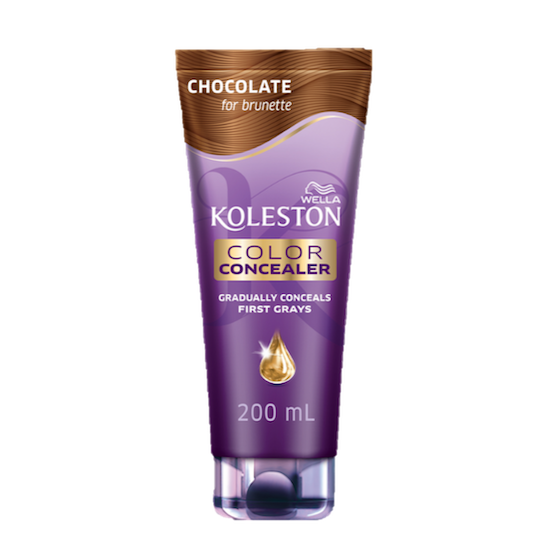
Now that you know how hair color works, it’s time to color!

